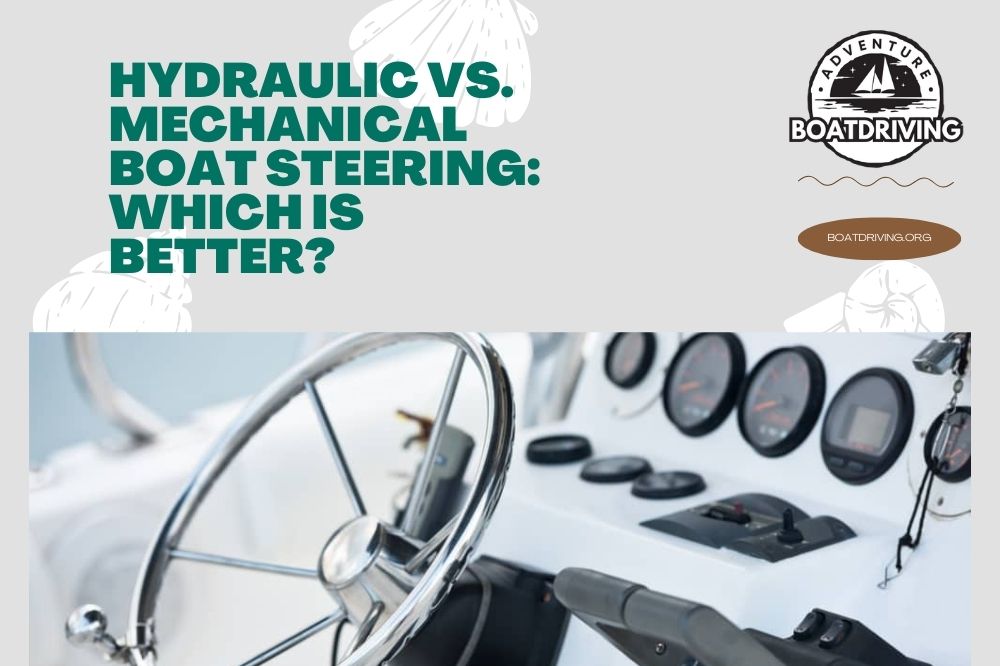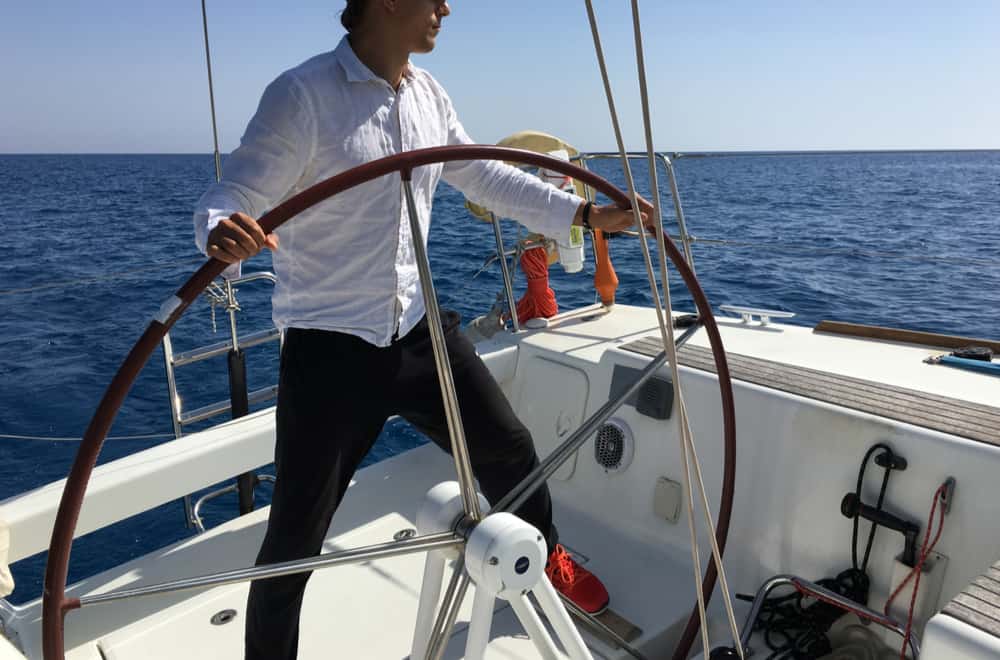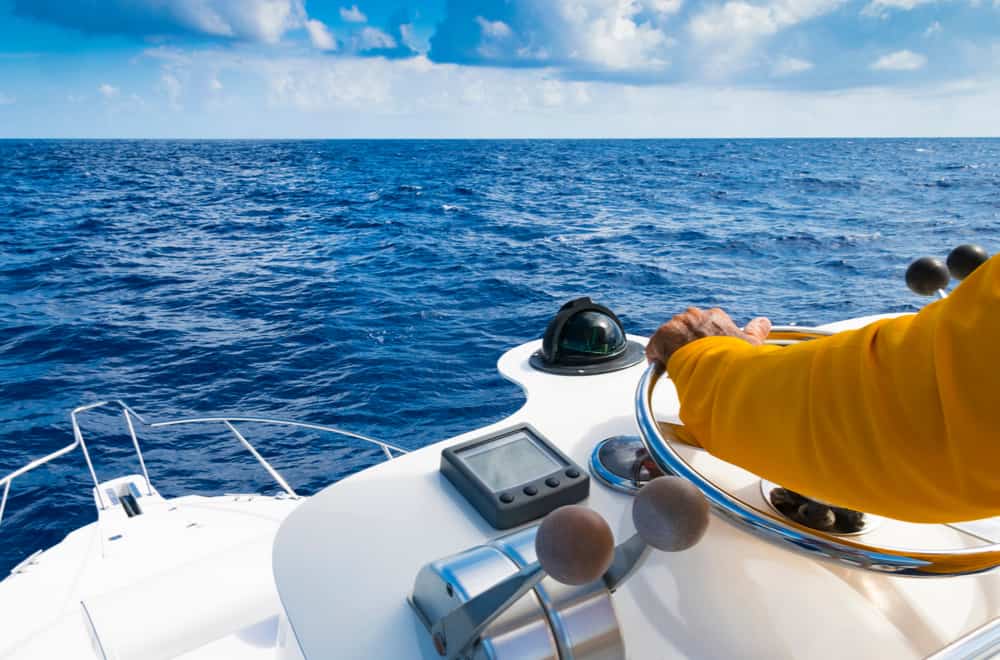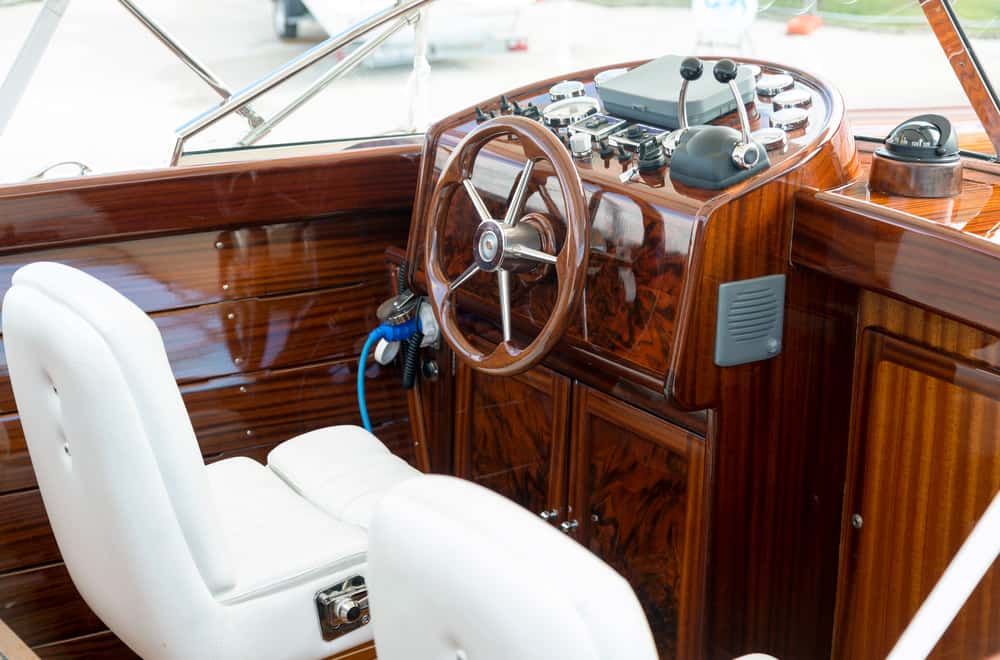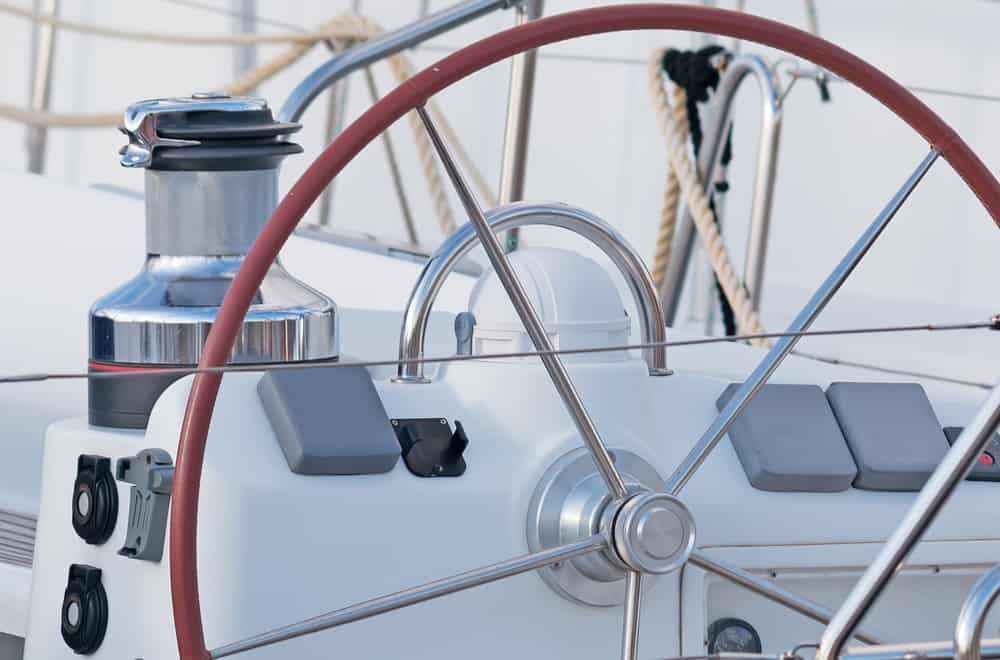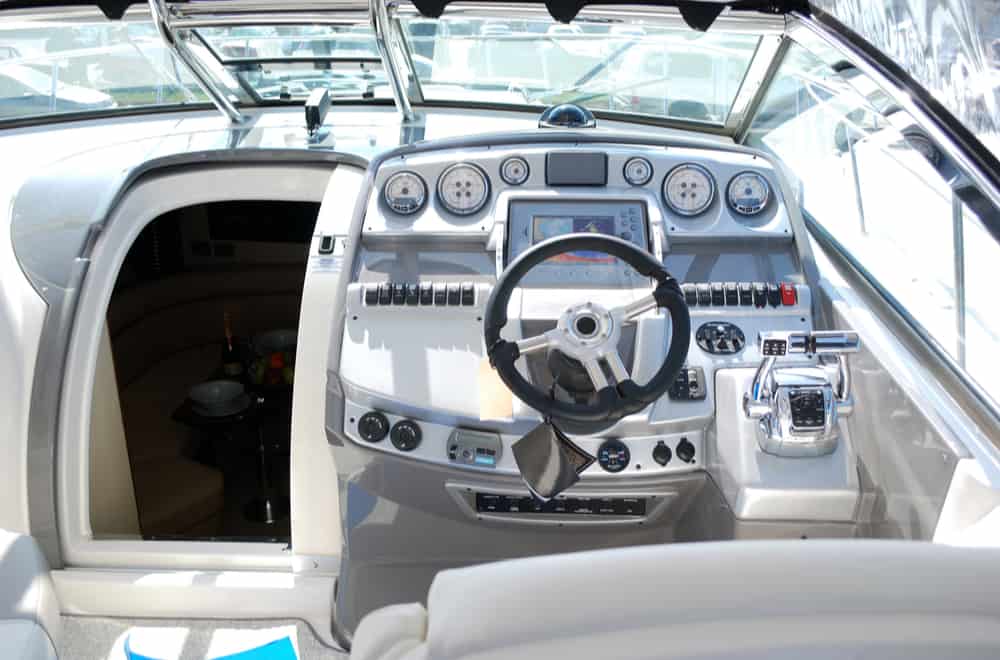Are you planning to switch your boat steering to hydraulic? Or, are you simply curious to know the differences between hydraulic and mechanical boat steering systems? Well, in any scenario, we’re here to answer all your queries!
In this post, we’ll share with you briefly the parts and their functions of both the steering system, followed by an in-detail comparison between the two. Bonus – we’ll also discuss the step-by-step procedure of switching your boat steering from mechanical to hydraulic.
Hydraulic vs mechanical boat steering – the comparison will be made on the basis of boat size, maintenance, cost, and ease of installation. Let’s dive deep and find out who’s the winner between these two steering systems!
Table of Contents
Mechanical Boat Steering – Parts and Mechanism
The entire mechanism relies on the physical connection between the steering wheel and the motor in mechanical boat steering. There are two types of helms – rotary helm and rack and pinion helm.
1. Rotary helm:
In this system, the rotational movement of the wheel is converted into push and pull action in the steering cable. The two types of gear rotary helm uses are the Reduction gear type and Planetary gear type.
2. Rack and pinion helm:
In this system, a pinion gear that interacts with the rack is attached to the end of the steering shaft. Rack and pinion helm is considered more efficient in moving the cable, given how it offers less friction.
Therefore, these are slightly more expensive than rotary helms. On the downside, this type of helm is larger in size.
3. Steering cables:
The push-pull action is the steering cable is what is responsible for the rudder movement whenever the steering wheel is turned. There can be a single-cable mechanical steering system or a double-cabled mechanical steering system.
Generally, vessels with 130 HP or less features single-cable steering. In contrast, large vessels with powerful engines of 130 hp and upwards feature dual-cable steering such that the load is shared across the two cables. Two helms are stacked on the shaft to make the load distribution easier.
4. Engine connection kit:
Mechanical steering kits often come with engine connection kits that include most of the hardware, connectors, and fasteners necessary to install the steering.
Hydraulic Boat Steering – Parts and Mechanism
Hydraulic boat steering system uses fluid-filled hoses to bring directional changes in response to the movement in the steering wheel. This system feels lightweight and easy to steer, even in heavy boats.
Moreover, as hydraulic steering does not feature as many metal parts as mechanical steering, this system is quite resistant to corrosion and frequent maintenance. Below we will discuss some of the integral parts of hydraulic boat steering and their functions.
1. Hydraulic helm:
Helms in hydraulic steering consists of hydraulic pumps and valves and are responsible for translating the rotatory movement of the wheel into fluidic pressure. When the wheel is rotated left, the fluid is pumped into the hydraulic hose in the port side, which directs the vessel portside.
2. Hydraulic cylinder:
When the steering wheel is turned, the fluid is pumped from the helm, the cylinder made up of cylinder bore, ram, and hardware moves which directs the engine accordingly.
3. Hydraulic hoses:
These high-pressured hoses are responsible for carrying the hydraulic fluid from the helm to the cylinder and back. In large high-performance vessels, these hoses are made up of copper. In contrast, nylon hoses are used in hydraulic steering systems in smaller vessels.
Hydraulic Vs. Mechanical Boat Steering
1. Boat size:
The general rule of thumb is that if your boat size is less than 10 meters and horsepower is less than 100 horsepower (HP), mechanical boat steering is a better choice for you.
The torque produced in large vessels makes it difficult for the helmsman to make sharp turns or to turn from one direction to another. On the other hand, in a hydraulic steering system, the fluid assists you during direction changes making it much easier and smooth to steer.
Therefore, even if your boat is 70 HP or above, many experts suggest that the hydraulic steering kit works better and is easier in this HP range. The upper range of power is 200 HP for hydraulic steering as above this HP; you’ll need to invest in a power-controlled steering kit.
Moreover, a mechanical steering kit shouldn’t be installed in boats that feature outboard motors that exceed the recommended HP of the vessel.
2. Maintenance:
It is recommended that you maintain your mechanical steering at least twice every boating season. Check for any damage, corrosion, or jamming in the steering cable, and clean and lube them.
While greasing them at least once a year or whenever you don’t see any visible grease on the area is recommended, sometimes grease can harden, restricting the steering wheel’s movement. Use a wire brush or drill-powered cleaner to clean the grease and corrosion.
Maintaining hydraulic lines, on the other hand, is relatively simple. You need to make sure that there are no air bubbles within the lines and cuts or damage on them.
As long as you don’t have any leaks and the dipstick is in between minimum and maximum in the reservoir, you shouldn’t have any problem with the steering system.
3. Ease of installation:
While installing a boat steering system might sound fancy and best left to professionals, the installation kits designed these days are easy to install even if you have never done a similar project before.
In fact, both the mechanical and hydraulic steering systems are easy to install. In the case of a mechanical steering system, you have to be mindful that the kit and the cable length is appropriate for your boat.
Likewise, when it comes to installing a hydraulic steering system, it is all about running the lines, filling the system, attaching the cylinder, and bleeding the air. All doable on your own as long as you have reliable assistance
4. Cost:
If your boat horsepower is low, and so is your budget, you should definitely go for a mechanical steering system. This steering is relatively more affordable than hydraulic steering.
Having said that, these days, hydraulic steering kits for smaller boats are also available commercially in an affordable price range. No doubt boaters are switching their steering system from mechanical to hydraulic.
Let’s talk about numbers – a hydraulic steering system can cost up to thousands of dollars. Nevertheless, hydraulic steering kits for small boats are also available commercially for under $1000.
On the other hand, multiple brands supply a good-quality mechanical steering kit for small vessels for just a few hundred dollars. Moreover, rotary kits are generally more cost-effective than rack and pinion among mechanical steering kits.
| Hydraulic Boat Steering | Mechanical Boat Steering | |
| Boat Size | Larger boat sizes or HP ranging from 70 to 200 | Boat size with less than 10 m or below 100 HP |
| Maintenance | High maintenance | Less maintenance |
| Cost | Relatively cost-effective | Relatively expensive but has become cheaper for small boat sizes |
| Ease of installation | Easy to install | Easy to install |
How to Upgrade your Mechanical Boat Steering to Hydraulic Boat Steering?
Upgrading to a hydraulic steering system not only reduces your steering effort but also reduces your maintenance efforts and cost significantly.
If you don’t possess the skills, tools, and time required to upgrade your boat steering system, it’s always good to hand over the project to professionals.
However, if you’re approaching this project through a DIY route, here’s a brief overview of how to switch your mechanical boat steering to hydraulic steering.
- Start by reading the instructions on the manual in detail such that you get the hint of supplies and tools you’ll need.
- Remove the steering wheel and the original mounting base.
- Separate the steering cable from the engine and tape two hydraulic hoses to it.
- Now, use the cable to reach the hoses to the helm.
- Mark 3-inch diameter hole required for the helm unit and cut it. Use the paper template that came with the kit or helm bezel as the template.
- Attach the hydraulic hoses up from the transom to the help and put the helm into position.
- Secure the mounting bolts and reinstall the steering wheel.
- Mount the cylinder assembly and fill the system with hydraulic fluid.
- Attach fluid hoses to the cylinder assembly, reinstall the wheel, and bleed the hoses by turning the steering wheel lock to lock.
- Perform system checks and make sure all the connections are nice and tight. And, you’re done!
Summary
As we’ve discussed before, if your vessel is small, a mechanical steering system will perfectly do the job as long as you keep them well-maintained. However, with increasing hp, the popularity of hydraulic steering rightfully increases among the boaters.
So, which of these two steering systems would you prefer for your vessels? Do you have mechanical steering at the moment? Are you willing to upgrade to a hydraulic one? Please share your opinions and experiences with us. It’ll definitely help our fellow boaters!
